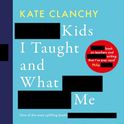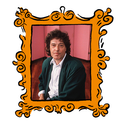This April sees the release of the programme for the Wigmore Hall's 2006-07 season—something that has been awaited with unusual anticipation, since it is the first to be developed by John Gilhooly, the hall's new director. Gilhooly is no newcomer to the hall. He has been executive director since 2000, working alongside first William Lyne and then Paul Kildea, who became artistic director on Lyne's retirement in 2003. If there were a prize for the person who did most to enrich London's musical life in the second half of the 20th century, Lyne would have to be a leading candidate. After becoming director in 1966, he turned the 540-seater Wigmore into one of the most vibrant of international concert halls, with a programme of instrumental, chamber music and lieder recitals that was unsurpassed. It was not only that Lyne was able to attract the most distinguished singers and instrumentalists, but also that he had the taste and judgement to identify such musicians early, and that he worked with them to build their careers. This in turn helped to build an audience that was committed both to the hall and to those who played there, making the hall yet more attractive to play in.
It is no secret that the couple of years after Lyne's retirement were not without their difficulties. Where Lyne's presence had been discreet and self-effacing, the personality of the new artistic director was much more immediately felt. He set up pre-concert chats between himself and the performers, wrote personal notes for the brochures and, as an aspiring conductor, conducted on stage, not always to good effect. His programming seemed to manifest more his own tastes than sensitivity to those of the Wigmore's audience. Suddenly, musicians of the highest stature who had had long associations with the hall were no longer on the programmes, and there was a plethora of new musicians providing, as one regular complained, a diet of wall-to-wall Benjamin Britten. This criticism was unfair, but it represented a significant feeling of discontent in the Wigmore's audience. Last May, Kildea unexpectedly resigned, saying he wanted to concentrate on his performing career and on writing his next book. Gilhooly was asked to add the artistic running of the hall to his existing responsibilities.
Certainly, Gilhooly's time as executive director has been a success. He saw the hall through a major refurbishment, as well as greatly expanding its educational programme and launching the Wigmore Hall Live CD label. Indeed, financially, the Wigmore seems in good shape. When we meet, Gilhooly tells me he has just heard that they have received a £1m donation that will allow them to secure the lease, due to expire in 2012. Without that, a big rent increase would have forced them to cut 50 to 60 concerts a year. At the moment, with a modest Arts Council grant and despite reasonable ticket prices, the hall makes a small surplus that helps to fund its other activities.
Now Gilhooly will be judged less on his abilities as a manager than on his ability to consolidate the hall's musical reputation, and the programme for next season is the first test of that. So soon after Kildea's departure, it would be tempting to see the programme for next season as a mixture of the tastes of the two men. Indeed, in Kildea's resignation statement he reassured the world that while "there is never an ideal time to leave such a job… great planks of [the] 2006-07 and 2007-08 [programmes] are in place." However great those planks in fact were, as soon as Gilhooly took over the artistic planning of the hall he decided to build with new timber, and the 2006-07 season fully reflects his own taste. Even the concerts in December 2006 to mark the 30th anniversary of the death of Benjamin Britten is Gilhooly's own. "Each concert includes a work that received its world or UK premiere at the Wigmore. To think that we can mount a three-day programme around Britten and include in every concert a piece that had its first association with the hall is incredible," he says.
Crucially, he is aware that he needs to take the audience with him. "You've got to earn your credentials first. There won't be any letters going out from me saying that this string quartet or that singer is the best thing since the flood. But I am subtly introducing new artists, and as those artists are judged and as the programme is judged, that will evolve naturally. It's not something I want to drive. The audience will decide. Any artistic director who programmes only in terms of his or her own preferences is going to be in trouble. You can include what you yourself want to hear, but that can't be your limitation."
Although the Wigmore only seats 540, the fact that it puts on 400 concerts a year means that, like all musical institutions, it has to maintain and build its audience. "We have to shift between 130,000 and 160,000 tickets a year, which is quite enough for any artistic institution." On average, 40 per cent of the audience is made up by the hall's regulars. "At the moment we have 7,000 first-time visitors every year and our ambition over three years is to double that number." In June, the Wigmore will launch a major promotional campaign in the press, on the radio and in the classical music journals. A central task will be to persuade those who already have an interest in classical music to taste the more intimate pleasures of chamber music and lieder. "It's surprising the number of people who are interested in opera or orchestral music who've never been to a chamber music concert," says Gilhooly. "To bring those people here is the first part of it. I'm not worried about grey hair in the audience. We're looking to a constituency that has some appreciation of music. Chamber music is some of the greatest music ever composed, but it is often something that people come to later in life. We can break down some of the barriers, but perhaps you need a certain kind of musical background before you listen to this music."
It is not, however, that his ambition is limited to attracting the musically informed middle-aged. While executive director, Gilhooly greatly expanded the Wigmore's educational programme. And he sees an opportunity for broadening the audience by reaffirming the hall's commitment to new music. "That's somewhere I think the audience will change and younger people will possibly come. Look at what happened at the Barbican for the Ligeti festival. They had hundreds of young people for a classical concert, who'd somehow just picked up on it." One of the key events of the next season will be a "mini-festival" of three concerts in the autumn to celebrate the recent 80th birthday of the Hungarian composer György Kurtág, whose music is among the most subtly inventive of the last few decades. "It's very unusual for the Wigmore to programme a modern composer three times, but the coming season is very representative of how things will develop. I wanted to include a contemporary composer, and I knew I wanted to do something around Kurtág, even before I knew it was his 80th birthday." Gilhooly has even persuaded Kurtág himself to give the final concert.
Most important is the balance of the programming through the year, which looks to be in the best traditions of the hall. In an age that privileges concepts and personalities in the arts, it may seem unfashionable to recognise that what is required of the director of an institution such as the Wigmore is indeed taste and judgement. As Gilhooly recognises, it takes time for an audience to gain trust in someone's taste, but his programme for next year is likely to encourage those who see the Wigmore as central to London's musical life. And reassuringly, when asked whether he plans to conduct in any of the concerts, his response is an incredulous "no."











